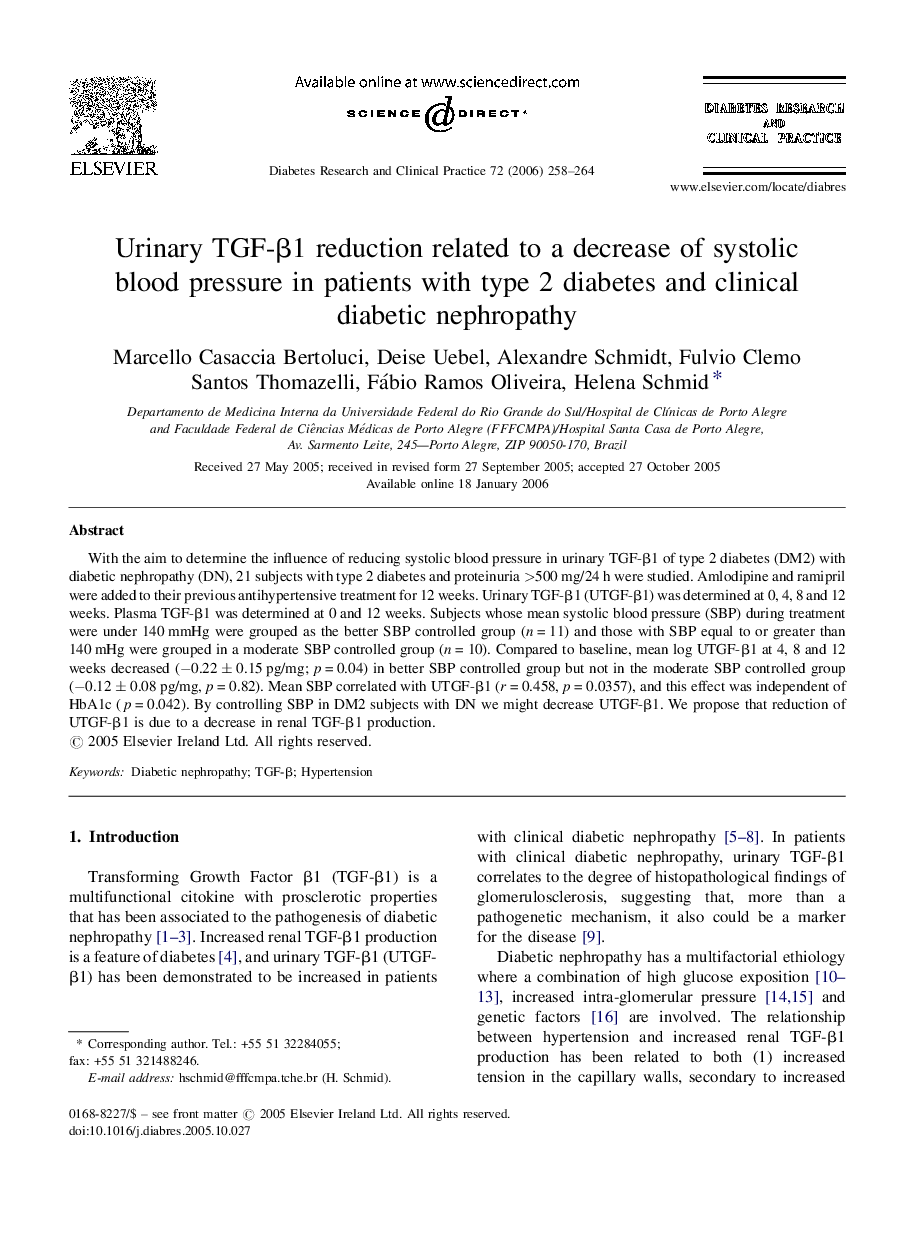| Article ID | Journal | Published Year | Pages | File Type |
|---|---|---|---|---|
| 2799198 | Diabetes Research and Clinical Practice | 2006 | 7 Pages |
Abstract
With the aim to determine the influence of reducing systolic blood pressure in urinary TGF-β1 of type 2 diabetes (DM2) with diabetic nephropathy (DN), 21 subjects with type 2 diabetes and proteinuria >500 mg/24 h were studied. Amlodipine and ramipril were added to their previous antihypertensive treatment for 12 weeks. Urinary TGF-β1 (UTGF-β1) was determined at 0, 4, 8 and 12 weeks. Plasma TGF-β1 was determined at 0 and 12 weeks. Subjects whose mean systolic blood pressure (SBP) during treatment were under 140 mmHg were grouped as the better SBP controlled group (n = 11) and those with SBP equal to or greater than 140 mHg were grouped in a moderate SBP controlled group (n = 10). Compared to baseline, mean log UTGF-β1 at 4, 8 and 12 weeks decreased (â0.22 ± 0.15 pg/mg; p = 0.04) in better SBP controlled group but not in the moderate SBP controlled group (â0.12 ± 0.08 pg/mg, p = 0.82). Mean SBP correlated with UTGF-β1 (r = 0.458, p = 0.0357), and this effect was independent of HbA1c (p = 0.042). By controlling SBP in DM2 subjects with DN we might decrease UTGF-β1. We propose that reduction of UTGF-β1 is due to a decrease in renal TGF-β1 production.
Related Topics
Life Sciences
Biochemistry, Genetics and Molecular Biology
Endocrinology
Authors
Marcello Casaccia Bertoluci, Deise Uebel, Alexandre Schmidt, Fulvio Clemo Santos Thomazelli, Fábio Ramos Oliveira, Helena Schmid,
